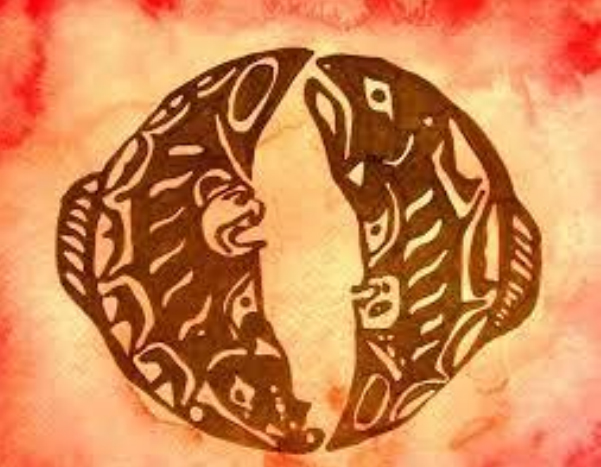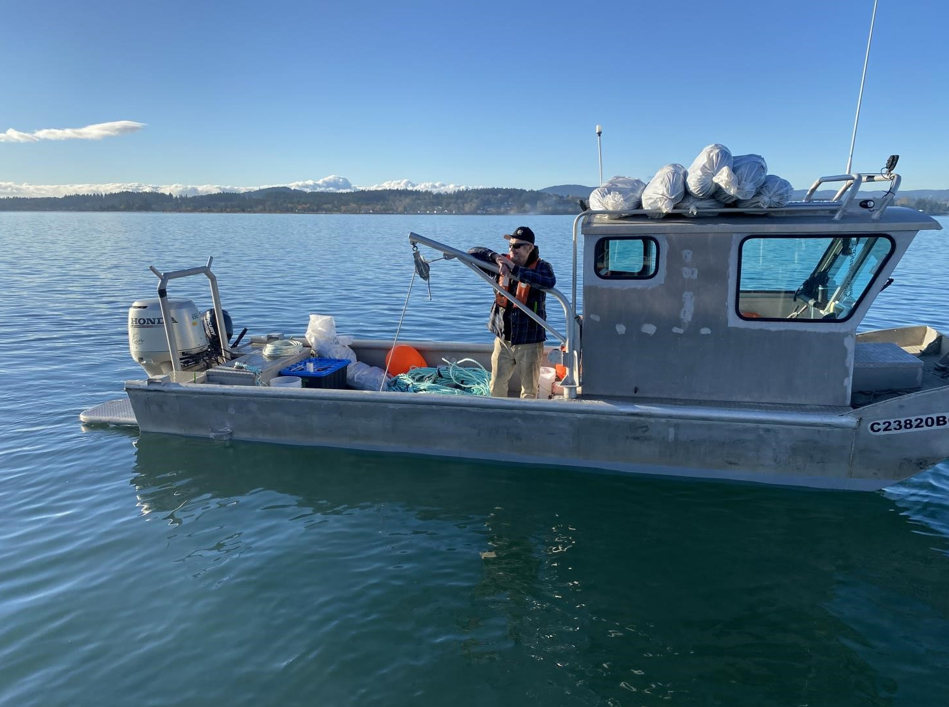Features
Update 2021/11/28
First Nation
brought to you in part by

First Nation coastal community seeds hope for a sustainable and sovereign future
170 Years After Signing The Douglas Treaty, Tsawout First Nation leads in marine protection
By Suzanne Forcese
“We need to prepare for the future and manage our own traditional lands, air and sea. As First Nations stewards, we need to pass on the rich ecological knowledge of our ancestors to ensure that economic activities taking place in our marine environment are safe and sustainable. This includes the protection and regulation of food, social and ceremonial purposes and benefits.”
-- Chrissy Chen, Fisheries Manager at Tsawout First Nation.
Fifteen minutes north of the City of Victoria, British Columbia, on the east side of the Saanich Peninsula, the Tsawout First Nation is making history. Or rather, the band is picking up the thread of recorded history in a first major step to conserve and protect the environment.
The Band has chosen Sidney-based Cascadia Seaweed (CS) in a joint venture that Fisheries Manager, Chrissy Chen describes as “the greenest of green projects”.
Crews have begun seeding an area 165 metres by 330 metres just off the western shore of James Island facing the Saanich Peninsula.
The seaweed industry is promoted by advocates as one that regenerates ecosystems, stores carbon and helps meet global food needs in the face of changing climate conditions for terrestrial agriculture.
By issuing a licence for CS to initiate a seaweed grow-op, Chen told WATERTODAY the Band is exercising an inherent right of self-government as defined in the Douglas Treaty signed in 1852; reinforced in Section 35 of the Constitution Act, 1982; and The United Nations Declaration on the Rights of Indigenous peoples.

The Tsawout First Nation is one of five bands that constitute the Saanich Nation. The other five bands of the Saanich Nation are Tsartlip, Tseycum, Malahat and Pauquachin. The signatories of the 1850 Douglas Treaty are ancestors of the present-day bands.
“It will be 170 years this coming February that the Douglas Treaty was signed,” Chen says. “We are ‘salt water people’ and it is our Creator-given responsibility to protect the water that has sustained us since time immemorial.”
The Douglas Treaties
The Legislative Assembly of British Columbia website states:
“It was the practice of Britain to extinguish the proprietary rights of the local Indigenous peoples prior to giving land title to new settlers. On Vancouver Island, this became the task of Hudson’s Bay company Chief Factor James Douglas (who became Governor of the Colony in September 1851).
“Between 1850 and 1854 James Douglas negotiated 14 treaties with several First Nations on Vancouver Island. These came to be known as the Douglas Treaties, which cover approximately 927 square kilometers of land around Victoria, Saanich, Sooke, Nanaimo and Port Hardy.”
The following text forms the basis of each of the treaties:
“The condition of our understanding of this sale is this, that our village sites and enclosed fields are to be kept for our own use, for the use of our children, and for those who may follow after us; and the land shall be properly surveyed hereafter. It is understood, however, that the land itself with these small exceptions, becomes the entire property of the white people forever; it is also understood that we are at liberty to hunt over the unoccupied lands and to carry on our fisheries as formerly.”
Turning The Tide
Chen acknowledges that past historical experiences and differences have impacted mainstream perceptions and opinions. The First Nations, Chen adds, are working to strengthen, enhance and honour historical, political, social and cultural relationships while promoting the wellbeing of future generations.
“We are here to protect our resources for seven generations. That is what we teach our children and our grandchildren.
“Our communities are endangered. We just have to initiate a comeback. Our people have always known how to live sustainably and with the help of CS our area can be restored.
“I looked at the pollution, the shipping traffic, our beaches that are strewn with contaminated clams, the declining salmon populations, and I knew we had to take a stance to protect our land and our water – our health and our livelihoods.
“But we can’t do it alone. We want to walk side by side with other cultures and resolve our problems together.
“We are honoured to sign and issue the permit to Cascadia.”

Tony Ethier, Founding Partner Cascadia Seaweed installing the seaweed farm in Tsawout Territory on November 23, 2021, under the governing authority of The Tsawout First Nation. “Generating new economic opportunities for Indigenous coastal communities is a key part of our business model and we are pleased that Tsawout have recognized the environmental, economic and social benefits of seaweed cultivation.” Photo Cascadia Seaweed
“This is the best venture. It’s why we started implementing Marine Law”.
For Chen this is just the beginning of her vision to jumpstart the community’s renaissance.
Next on her bucket list is a revival of the village historical site, shell-fish aquaculture, and herring restoration.
“Everything is dying. And this is so simple. This is going to clean the water, the beaches and everything around it. It will also bring life to us, better education for our children, better housing. It’s time for us to resolve our problems together, to walk side by side.
“Nothing gives me greater pleasure than to know this is going to feed our people. It’s the best part of my job.”
|